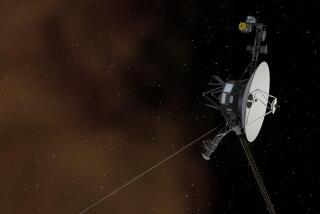Early Magellan Shutdown Bemoaned by Researchers
- Share via
Sporting red lapel buttons that protest an early end to their spacecraft’s mission, scientists Wednesday unveiled the latest results from the Magellan probe orbiting Venus, including three-dimensional images of Venusian mountains and new details about the approximately 1,500 volcanoes that riddle the planet’s surface.
The financially strapped National Aeronautics and Space Administration has decided to turn off Magellan’s instruments two years early to save about $50 million. But researchers at the Jet Propulsion Laboratory in Pasadena said that that move could keep scientists from gathering data that might reveal important information about Earth’s geology.
The Magellan scientists want to keep receiving data until 1995, as originally planned. This would allow them to map the surface again and look for changes--their only chance to see if the volcanoes are active. And it would allow them to complete a process started Wednesday--measurement of the planet’s gravity field, which provides clues to the distribution of its interior mass.
Venus is the closest of the solar system’s planets to Earth, in distance and in terms of size and chemical composition.
The planet has no water, however, and, apparently as a consequence, no tectonic land mass plates that float above its molten core as on Earth. So the surface of Venus is a more accurate reflection of what goes on in the planet’s interior, said Steve Saunders, the JPL scientist who is managing Magellan research. JPL is operating the spacecraft for NASA.
But without finishing the mission, “we can’t really make good guesses,” he said.






